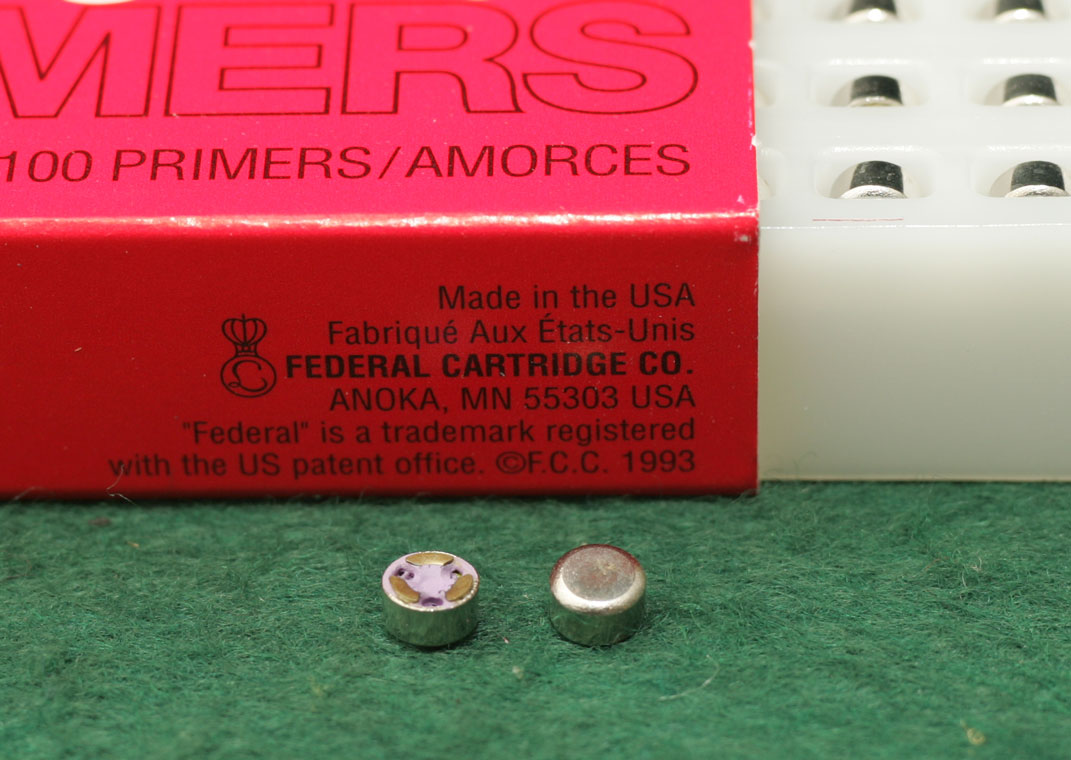
Primer

Two primers. Left, the live side---faces into the cartridge. Right, the outside---takes the blow from the firing pin. These are Boxer primers (see below).

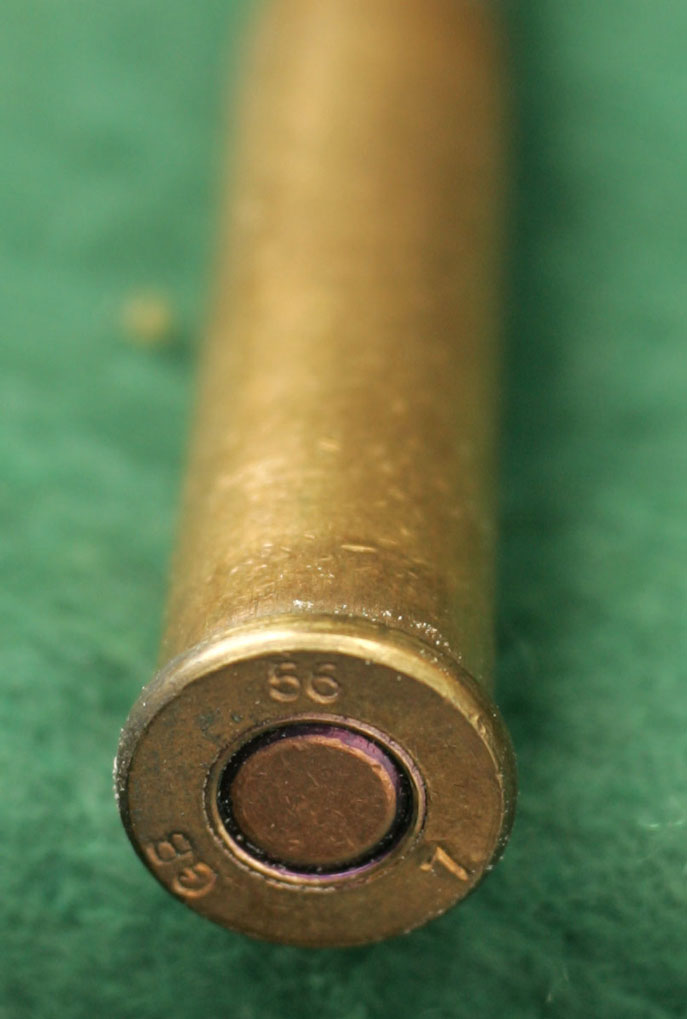
A primer, sealed with purple goo, pressed into a centerfire cartridge head and secured by ringing---a circular punch-strike to the brass surrounding the primer pocket.
Primer - A descendant of the percussion cap; a small capsule of soft metal containing an impact-sensitive detonating compound, press-fitted into the head of a centerfire cartridge. When the primer is struck by the firing pin, the small charge explodes, touching off the main powder charge inside the cartridge, launching the bullet or shot charge.
Shell cases are generally made to accept primers of either one of two types, Boxer or Berdan:
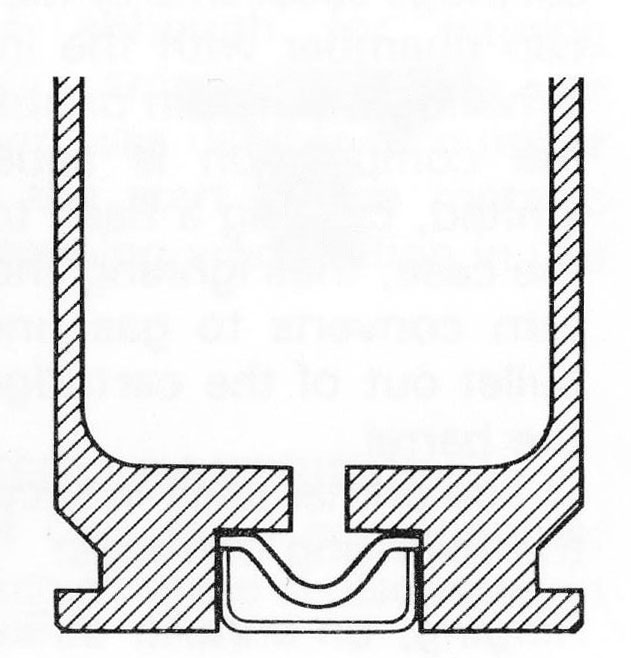
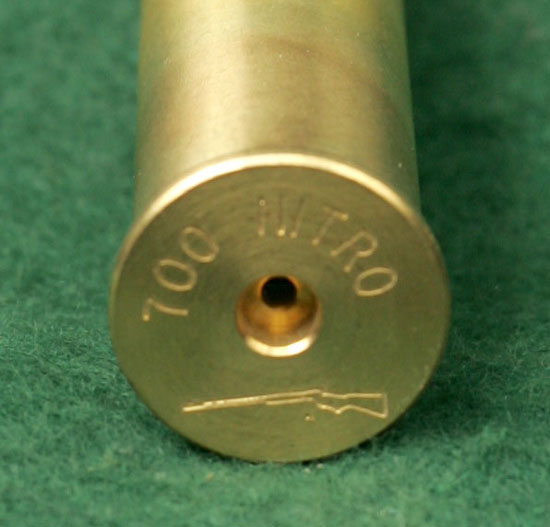
Cross-sectional diagram of Boxer Primer in Primer Pocket of shell casing.
Shell casing showing empty Boxer Primer Pocket.
Boxer - A case having a primer pocket with one central touchhole at the
center bottom. A tiny anvil is built into the primer to provide a surface
against which the detonating compound may be sharply pinched by the action of
the firing pin. Commonly used in the USA (although designed by Edward M. Boxer,
a Briton). It is simple to remove the
spent Boxer primer for re-loading the shell casing with a single, central,
pin-shaped decapping punch.
Cross-sectional diagram of Berdan Primer in Primer Pocket of shell casing.
Shell casing showing empty Berdan Primer Pocket.
Berdan - Normally a case having a primer pocket with two, off-center toucholes and an integral anvil built into the center. Commonly used in Europe (although designed by Hiram Berdan, an American). Theoretically provides more reliable ignition by better distribution of the primer's flash. Berdan primers must be pierced from the outside and pried out to remove for reloading.
Rimfire cartridges have no separate replacable primer; their priming compound is spun by centrifugal force into the crevice of the hollow rim on sophisticated equipment in factories. Rimfire cartridges, such as the .22 Long Rifle, cannot be reloaded with consumer equipment, at home. Rimfire cartridges are detonated when the firing pin hits the edge of the base of the cartridge and pinches the priming compound between the folds of the rim.
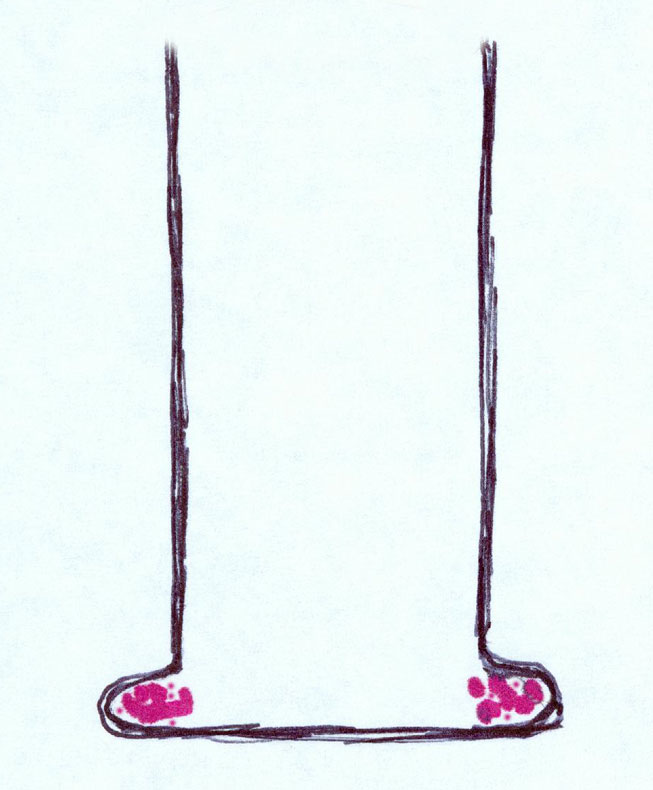
Longitudinal section drawing of a rimfire cartridge. Priming compound, in red, is pinched and detonated when the firing pin strikes the cartridge rim.
The Hallowell & Co. Illustrated Firearms Dictionary is for informational purposes only. We do not necessarily offer the items described above for sale. Please click on any of the links below to see what we actually do have available for purchase.
American Shotguns English Shotguns European Shotguns Double Rifles Magazine Rifles Single Shot Rifles Combination Guns
Winchester Colt Smith & Wesson Other Handguns Antique Guns New Arrivals Custom Knives Other Neat Stuff
Who We Are How to Order We want to buy your Gun(s) Recommended Links Historical Gallery
Firearms Definitions, Abbreviations & Opinions Store Photos Magazine Articles Home
Hallowell & Co., Inc. PO Box 1445. Livingston, Montana 59047 USA Tel: 406 222-4770 Fax: 406 222-4792 Email: morris@hallowellco.com
Hours: Tuesday - Saturday, 10 - 6. (Mountain Time) Our inventory is constantly changing. Please bookmark this site and return often.